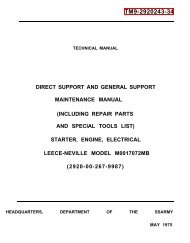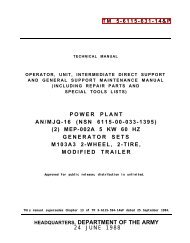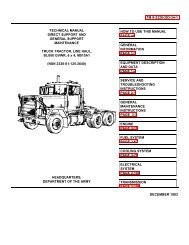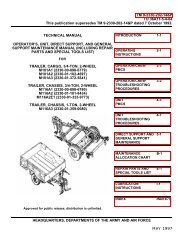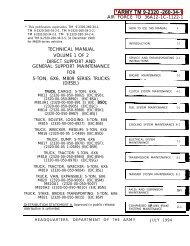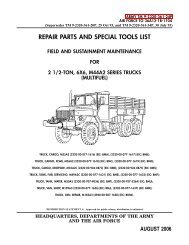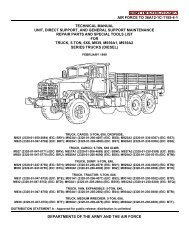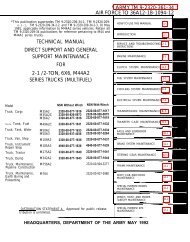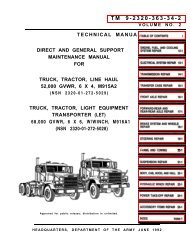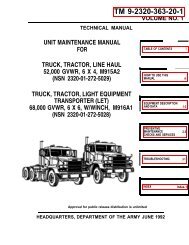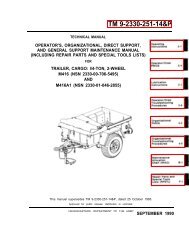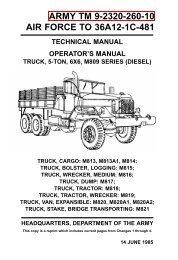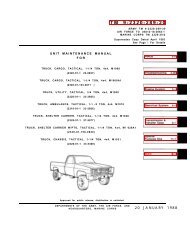TM 9-2320-211-10-4 T.O. 36A12-1C-421-4
TM 9-2320-211-10-4 T.O. 36A12-1C-421-4
TM 9-2320-211-10-4 T.O. 36A12-1C-421-4
Create successful ePaper yourself
Turn your PDF publications into a flip-book with our unique Google optimized e-Paper software.
WARNING<br />
EXHAUST GASES CAN BE DEADLY<br />
Exposure to exhaust gases produces symptoms of headache, dizziness, loss of muscular<br />
control, apparent drowsiness, and coma. Permanent brain damage or death can result<br />
from severe exposure.<br />
Carbon monoxide occurs in the exhaust fumes of fuel burning heaters and internal<br />
combustion engines, and becomes dangerously concentrated under conditions of inadequate<br />
ventilation. The following precautions must be observed to insure the safety of<br />
personnel whenever fuel burning heater(s) or engine of any vehicle is operated for<br />
maintenance purposes or tactical use.<br />
Do not operate heater of engine of vehicle in an enclosed area unless it is adequately<br />
ventilated.<br />
Do not idle engine for long periods without maintaining adequate ventilation in personnel<br />
compartments.<br />
Do not drive any vehicle with inspection plates or cover plates removed unless<br />
necessary for maintenance purposes.<br />
Be alert at all times during vehicle operation for exhaust odors and exposure symptoms.<br />
If either are present, immediately ventilate personnel compartments. If symptoms<br />
persist, remove affected personnel from vehicle and treat as follows: expose to fresh<br />
air; keep warm; do not permit physical exercise; if necessary, administer artificial<br />
respiration.<br />
If exposed, seek prompt medical attention for possible delayed onset of acute lung<br />
congestion. Administer oxygen if available.<br />
The best defense against exhaust gas poisoning is adequate ventilation.<br />
Use extreme care when removing radiator cap, especially when temperature gage shows<br />
above 180°F.<br />
Always wear leather gloves when handling winch cable never allow cable to slip<br />
through hands. Do not operate winch with less than four turns of cable drum.<br />
Do not drive truck until the low air pressure warning buzzer is silent and the air<br />
pressure gage shows at least 65 PSI. This is the minimum pressure required for safe<br />
braking action.<br />
Do not use hand throttle to drive the vehicle.<br />
Do not park truck with front transmission gearshift lever in gear.<br />
When used to carry flammables, explosives, or other hazardous material, equip truck<br />
with a fire extinguisher.<br />
If your vehicle class number is greater than the bridge class number, your vehicle is<br />
too heavy for the bridge; DO NOT CROSS.



